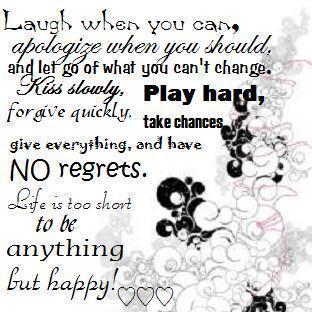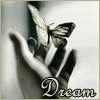From Wikipedia, the free encyclopedia
| Arts in Australia |
| Architecture |
Australian literature began soon after the settlement of the country by Europeans. Common themes include indigenous and settler identity, alienation, exile and relationship to place - but it is a varied and contested area.
Contents[hide] |
[edit] Early works
Early popular works tended to be of the 'ripping yarn' variety, telling tales of derring-do against the new frontier of the Australian outback. Writers such as Rolf Boldrewood, Marcus Clarke and Joseph Furphy embodied these stirring ideals in their tales and, particularly the latter, tried to accurately record the vernacular language of the common Australian. These novelists also gave valuable insights into the penal colonies which helped form the country and also the early rural settlements.
Australia’s first novel, Quintus Servinton: A Tale founded upon Incidents of Real Occurrence1831. It was written by the convicted English forger Henry Savery and published anonymously though the authorship became a public secret. It is regarded as a thinly disguised autobiography designed to demonstrate how his fictional equivalent was different from the general convict population.[1] was written and published in Tasmania in
In 1838 The Guardian: a tale by Anna Maria Bunn was published in Sydney. It was the first Australian novel printed and published in mainland Australia and the first Australian novel written by a woman. It is a Gothic romance.[1]
[edit] Poetry
Poetry played an important part in the founding of Australian literature. Henry Lawson, son of a Norwegian sailor born in 1867, was widely recognised as Australia’s poet of the people and, in 1922, became the first Australian writer to be honoured with a state funeral. Two poets who are amongst the great Australian poets are Christopher Brennan and Adam Lindsay Gordon; Gordon was once referred to as the "national poet of Australia" and is the only Australian with a monument in Poets' Corner of Westminster Abbey in England.
Both Gordon’s and Brennan's (but particularly Brennan’s) works conformed to traditional styles of poetry, with many classical allusions, and therefore fell within the domain of high culture. However, at the same time Australia was blessed with a competing, vibrant tradition of folk songs and ballads. Henry Lawson and Banjo Paterson were two of the chief exponents of these popular ballads, and ‘Banjo’ himself was responsible for creating what is probably the most famous Australian verse, Waltzing Matilda. Romanticised views of the outback and the rugged characters that inhabited it played an important part in shaping the Australian nation’s psyche, just as the cowboys of the American Old West and the gauchos of the Argentine pampa became part of the self-image of those nations.
Prominent Australian poets of the twentieth century include A. D. Hope, Judith Wright, Gwen Harwood, Kenneth Slessor, Les Murray and more recently John Forbes and John Tranter. More recent and emerging Australian poets include Judith Beveridge.
Contemporary Australian poetry is mostly published by small, independent book publishers. However, other kinds of publication, including new media and online journals, spoken word and live events, and public poetry projects are gaining an increasingly vibrant and popular presence. Red Room Company is a major exponent of innovative projects.
[edit] Writing and Identity
A complicated, multi-faceted relationship to Australia is displayed in much Australian writing, often through writing about landscape. Barbara Baynton's short stories from the late 1800s/early 1900s convey people living in the bush, a landscape that is alive but also threatening and alienating. Kenneth Cook's Wake in Fright (1961) portrayed the outback as a nightmare with a blazing sun, from which there is no escape. Colin Thiele's novels reflected the life and times of rural and regional Australians in the 20th century, showing aspects of Australian life unknown to many city dwellers.
What it means to be Australian is another issue that Australian literature explores. Miles Franklin struggled to find a place for herself as a female writer in Australia, fictionalising this experience in My Brilliant Career (1901). Marie Bjelke Petersen's popular romance novels, published between 1917 and 1937, offered a fresh upbeat interpretation of the Australian bush. The central character in Patrick White's The Twyborn Affair tries to conform to expectations of pre-WWII Australian masculinity but cannot, and instead, post-war, tries out another identity - and gender - overseas. Peter Carey has toyed with the idea of a national Australian identity as a series of 'beautiful lies', and this is a recurrent theme in his novels. Andrew McGahan's PraiseChristos Tsiolkas's Loaded (1995) introduced a 'gritty realism' take on questions of Australian identity in the 1990s, though an important precursor to such work was Helen Garner's Monkey Grip (1977). (1992) and
Australian literature has had several scandals surrounding the identity of writers. The 1944 Ern Malley affair led to an obscenity trial and is often blamed for the lack of modernist poetry in Australia. To mark the 60th anniversary of the Ern Malley affair another Australian writer, Leon Carmen, set out to make a point about the prejudice of Australian publishers against white Australians. Unable to find publication as a white Australian he was an instant success using the false Aboriginal identity of Wanda Koolmatrie with My Own Sweet Time. In the 1980s Streten Bozik also managed to become published by assuming the Aboriginal identity of B Wongar.In the 1990s, Helen Darville used the pen-name “Helen Demidenko” and won major literary prizes for her Hand that Signed the Paper before being discovered, sparking a controversy over the content of her novel, a fictionalised and highly tendentious account of the Nazi occupation of the Ukraine. Mudrooroo - previously known as Colin Johnson - was acclaimed as an Aboriginal writer until his Aboriginality came under question (his mother was Irish/English and his father was Irish/African-American, however he has strong connections with Aboriginal tribes); he now avoids adopting a specific ethnic identity and his works deconstruct such notions.
Other writers have felt that, whatever Australia was, it needed to be escaped. Clive James, Robert Hughes, Barry Humphries and Germaine Greer are all Australian writers who left Australia in the 1960s for England and America. Greer, author of The Female Eunuch, has spent much of her career in England and has been a fierce critic of her native land, and she does not return there often.
[edit] Other developments
Australian literature can be thought of as coming of age in 1973 when Patrick White became the first (and so far only) Australian to be awarded the Nobel Prize for Literature. (2003 laureate John M. Coetzee lives in Adelaide, South Australia, but was born in South Africa and is not widely regarded as Australian.) Other notable writers to have emerged since the 1970s include Peter Carey, Kate Grenville, David Malouf, Janette Turner Hospital, Marion Halligan, Christopher Koch, Alex Miller, Shirley Hazzard, Richard Flanagan and Tim Winton.
James Clavell in The Asian Saga discusses an important feature of Australian literature: its portrayal of far eastern culture, from the admittedly even further east, but nevertheless western cultural viewpoint, as Nevil Shute did. Clavell was also a successful screenwriter and along with such writers as Thomas Keneally, who won the Booker Prize for Schindler's Ark (the book Schindler's List is based on), has expanded the topics of Australian literature far beyond that one country. Other novelists to use international themes are Gerald Murnane and Brenda Walker.
[edit] Aboriginal writing
The voices of indigenous Australians have begun to be noticed and include the playwright Jack Davis, Kevin Gilbert, and poet and activist Oodgeroo Noonuccal. Sally Morgan's My Place was considered a breakthrough memoir in terms of bringing indigenous stories to wider notice.
The allegedly indigenous writer Mudrooroo was later shown not to be indigenous, but of Irish, English, and African-American descent. [2]
Writers coming to prominence in the 21st century include Alexis Wright and Tara June Winch.
[edit] Science fiction and fantasy
[edit] Crime
The Crime fiction genre is currently thriving in Australia, most notably through books written by Kerry Greenwood, Shane Maloney, Peter Temple, Barry Maitland and Peter Corris, among others.
[edit] History
History has been an important discipline in the development of Australian writing. A significant milestone was the historian Manning Clark's six volume History of Australia, which is regarded by some as the definitive account of the nation. Also important was art critic Robert Hughes' much-debated history The Fatal Shore.
[edit] Literary journals
Most recent Australian literary journals have originated from universities - and specifically English or Communications departments. They include:
Other journals include:
A number of newspapers also carry literary review supplements:
Established online journals include:
[edit] Awards
Current literary awards in Australia include:
- Anne Elder Award
- The Australian/Vogel Literary Award
- Children's Book Council of Australia
- Ditmar Award Science Fiction (includes Fantasy & Horror)
- Kenneth Slessor Prize for Poetry
- Mary Gilmore Prize for a first book of poetry
- Miles Franklin Award
- New South Wales Premier's Literary Awards
- Patrick White Award
- Queensland Premier's Literary Awards
- Victorian Premier's Literary Award
- Western Australian Premier's Book Awards
Australian authors are also eligible for a number of other significant awards such as:
See the List of Australian literary awards for a more comprehensive listing of Australian literary awards.
[edit] See also
- List of Australian novelists
- List of Australian poets
- List of years in Australian literature
- Australian performance poetry
- List of Australian literary awards
- Tasmanian Literature
- New South Wales Premier's History Awards
- Australian History Awards
[edit] References
- ^ a b Turcotte, G. (1998). "Australian Gothic" (pdf - 12 pages). Faculty of Arts - Papers. University of Wollongong. http://ro.uow.edu.au/cgi/viewcontent.cgi?article=1060&context=artspapers. Retrieved 2008-01-09.
- ^ The Literary Encyclopedia
[edit] Bibliography
Spielmann:Another 'Aboriginal' Confesses Hoax,South Coast Today, 1997 Laura Browder: Slippery characters: ethnic impersonators and American identities, 2000








No comments:
Post a Comment